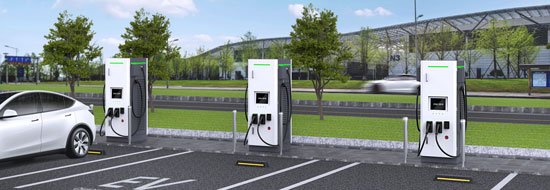The story of electric vehicles and the charging infrastructure needed to sustain them is a bit of a chicken-and-egg scenario.
The number of EVs on the road is at least in part driven by the availability of charging stations, while the willingness of companies to build those chargers is driven by the calculation of whether there will be enough demand for them to make them economically feasible.
This is broadly the state of affairs transportation planners and companies are looking at in terms of EV infrastructure planning, according to GP McLeer, director of Upstate Mobility Alliance.
Working in tandem

McLeer said increasing EV infrastructure should proceed in tandem with the increase in EV adoption, and one area where that’s happening organically is in the state’s more urbanized areas.
Besides his role with Upstate Mobility Alliance, McLeer is also mayor of Fountain Inn and sees his city’s experience repeated in municipalities across the region.
Fountain Inn has two charging stations in public parking spaces downtown. They are used with some frequency over the course of a day by people who park and spend time in surrounding shops and restaurants, McLeer said.
He said such locations in downtowns are generally regarded as public service amenities, but as EV numbers climb, he expects more businesses to incorporate charging stations as part of their business model.
In Greenville, all municipal garages incorporate EV chargers as part of the city’s push to use advanced technology to modernize its transportation infrastructure, according to Russell Stall, a city councilman who is himself an EV owner.
“We are very interested in providing adequate EV infrastructure,” he said.
He added he was initially concerned about the availability of charging stations when he purchased his EV but has found ample infrastructure in place during his travels.
Nevertheless, he said, range anxiety is still probably playing a role in holding down rates of EV adoption but expects numbers to climb as people grow more confident in the technology.
“It’s going to happen,” he said.
Market movers

Private enterprise will likely have a major role in boosting consumer confidence in EVs, McLeer said.
He said companies like Starbucks and McDonald’s are exploring EV charging as a means to attract customers and encourage those customers to spend more time, and money, at those locations.
The logic also applies to traditional convenience stores, and McLeer said a new Circle K recently completed in Fountain Inn incorporates EV chargers.
Greenville-based Spinx entered the EV charging market in 2011 with five units and the company builds all new locations with the infrastructure needed to support charging stations.
Shaun Bolger, director of fuel marketing for Spinx, told the trade publication cspdailynews.com his company works with EVgo and Tesla to operate charging units at its locations.
“Our goal is to continue with our strategy and deploy EV charging at the appropriate existing sites, as well as new builds,” he said. “Much like many in the (convenience) store arena, we will continue to monitor and adjust accordingly to the EV industry advancements.”
Did you know?
Federal funding through the National Electric Vehicle Infrastructure plan administered by SCDOT is expected to produce 15 rapid-charging stations along South Carolina’s interstate corridors in the next few years.
[ad_2]
Source link




